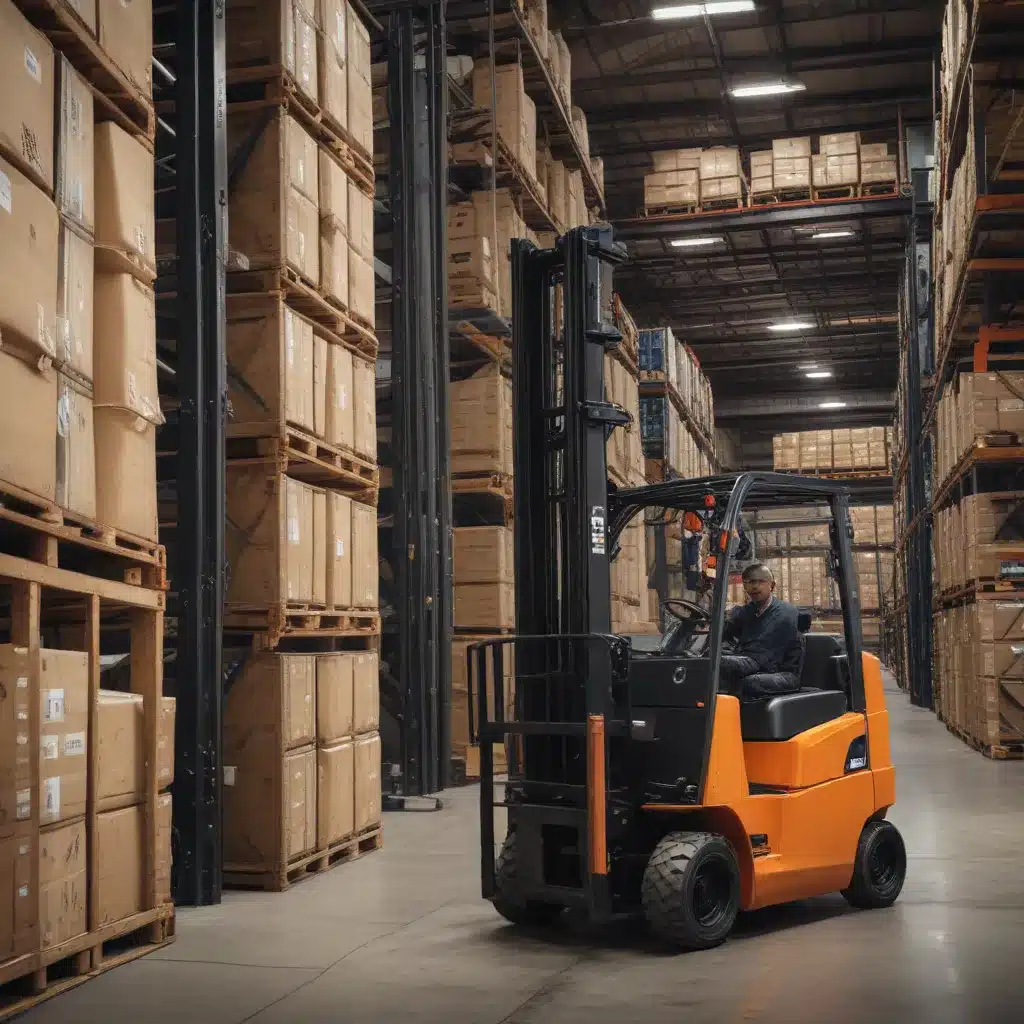
Forklift Acquisition Options: Weighing the Pros and Cons
When it comes to equipping your warehouse or distribution center with the right forklifts, the decision to lease or buy is a critical one that can significantly impact your operational efficiency and bottom line. As an industry expert, I’ve seen businesses navigate this choice with varying degrees of success, and I’m here to share practical insights to help you make an informed decision.
Leasing Forklifts: Flexibility and Cash Flow Benefits
Forklift leasing offers several compelling advantages that make it an attractive option for many businesses. Firstly, leasing preserves your working capital, allowing you to conserve cash for other critical investments or day-to-day operations. Rather than tying up a large lump sum in a forklift purchase, you can spread out the costs over the lease term, often with predictable monthly payments. This can be particularly beneficial for companies with fluctuating cash flow or those looking to manage their finances more efficiently.
Another key benefit of leasing is the ability to regularly upgrade your forklift fleet. As technology advances and your operational needs evolve, you can easily transition to newer, more efficient models without the burden of selling off your existing equipment. This flexibility helps ensure your material handling operations remain optimized and your employees have access to the best tools for the job.
Buying Forklifts: Ownership and Long-Term Cost Savings
On the other hand, purchasing your forklifts outright can offer significant long-term cost savings and the peace of mind that comes with equipment ownership. By owning your forklifts, you avoid the ongoing lease payments and have the freedom to use the equipment for as long as it remains productive and well-maintained. This can be especially advantageous for businesses with predictable, stable operations that do not require frequent fleet upgrades.
Furthermore, when you own your forklifts, you have complete control over their maintenance and repair schedules. This allows you to tailor servicing to your specific needs, potentially extending the useful life of your equipment and minimizing downtime. Coupled with the ability to depreciate the asset on your balance sheet, buying forklifts can offer significant long-term financial benefits.
The Emergence of Predictive Analytics and Condition Monitoring
As you weigh the leasing vs. buying decision, it’s essential to consider the role of emerging technologies that are transforming the forklift industry. Predictive analytics and condition monitoring systems are becoming increasingly prevalent, providing valuable insights that can inform your acquisition strategy.
Predictive Analytics: Forecasting Maintenance and Replacement Needs
Predictive analytics leverage data from sensors, telematics, and historical maintenance records to forecast when forklift components are likely to fail. By analyzing factors such as operating hours, load capacity, and environmental conditions, these systems can predict the optimal time for preventive maintenance or component replacement.
For businesses that own their forklifts, predictive analytics can help extend the lifespan of their equipment and avoid costly unplanned downtime. By proactively scheduling maintenance based on projected needs, rather than a fixed schedule, you can maximize the return on your forklift investment.
Conversely, for companies that lease their forklifts, predictive analytics can provide valuable data to negotiate more favorable lease terms. By demonstrating the expected useful life of the equipment and the corresponding maintenance costs, you can potentially secure lower lease rates or more advantageous end-of-lease options.
Condition Monitoring: Ensuring Peak Performance
Complementing predictive analytics, condition monitoring technologies use real-time sensors to track the performance and health of individual forklift components. By continuously monitoring factors such as engine temperature, hydraulic pressure, and battery health, these systems can identify potential issues before they escalate into major problems.
For both leased and owned forklifts, condition monitoring can help ensure that your equipment is operating at peak efficiency. When issues are detected early, you can proactively address them through timely maintenance or repairs, reducing the risk of unexpected breakdowns and prolonging the useful life of your forklifts.
Moreover, the data generated by condition monitoring systems can be invaluable when negotiating forklift leases or purchases. By demonstrating the overall condition and performance of your fleet, you can better justify your acquisition strategy and potentially secure more favorable terms.
Integrating Predictive Analytics and Condition Monitoring into Your Forklift Acquisition Strategy
Regardless of whether you choose to lease or buy your forklifts, incorporating predictive analytics and condition monitoring into your decision-making process can provide a significant competitive advantage. Here are some strategies to consider:
For Leased Forklifts:
- Leverage predictive analytics to negotiate more favorable lease terms, such as lower monthly payments or extended end-of-lease options.
- Use condition monitoring data to demonstrate the well-maintained state of your leased forklifts, potentially securing better deals on future lease renewals or new acquisitions.
- Work closely with your leasing provider to ensure that maintenance schedules and procedures align with the insights from your predictive analytics and condition monitoring systems.
For Owned Forklifts:
- Implement predictive analytics to optimize your maintenance schedules and prolong the useful life of your forklifts, maximizing your return on investment.
- Utilize condition monitoring to identify potential issues early, allowing you to address them before they lead to costly downtime or premature equipment replacement.
- Maintain detailed records of your forklifts’ performance and maintenance history, which can be valuable when it comes time to replace or sell your equipment.
Ultimately, the decision to lease or buy forklifts should be based on a holistic assessment of your operational needs, financial considerations, and the emerging technologies that can enhance your material handling efficiency. By carefully weighing these factors, you can develop a forklift acquisition strategy that aligns with your business objectives and positions your organization for long-term success.
For more information on forklift reviews, safety guidelines, and industry trends, be sure to visit Forklift Reviews. Our team of experts is dedicated to providing the latest insights and practical advice to help you make informed decisions about your material handling operations.

